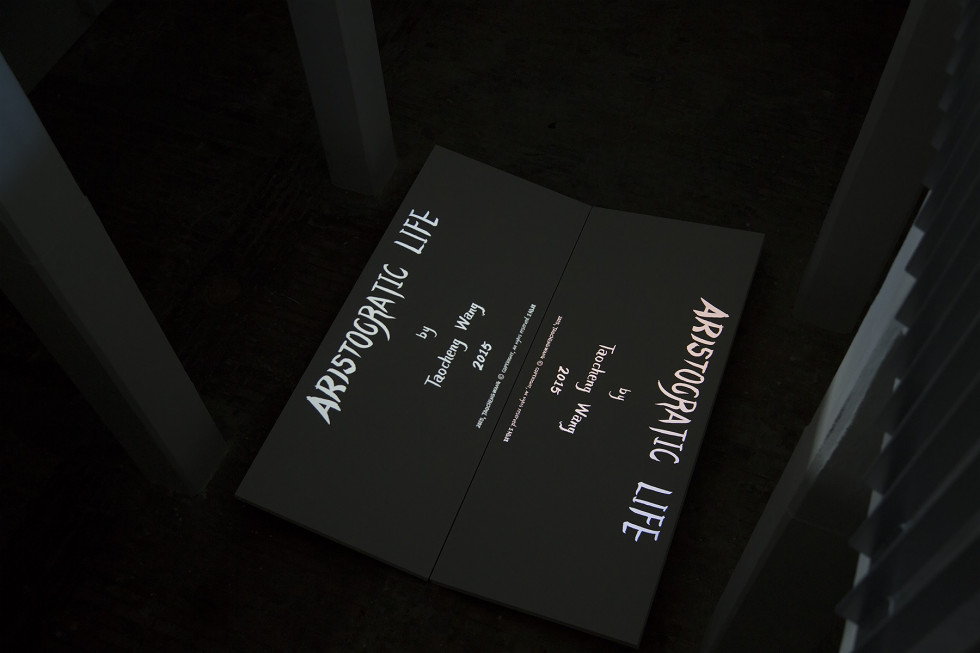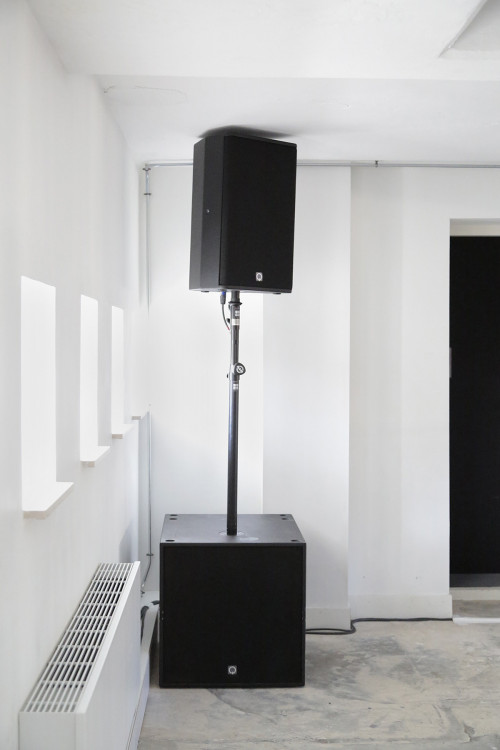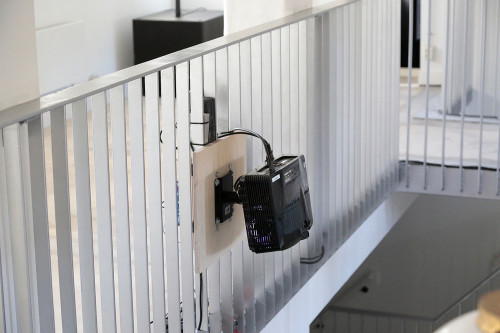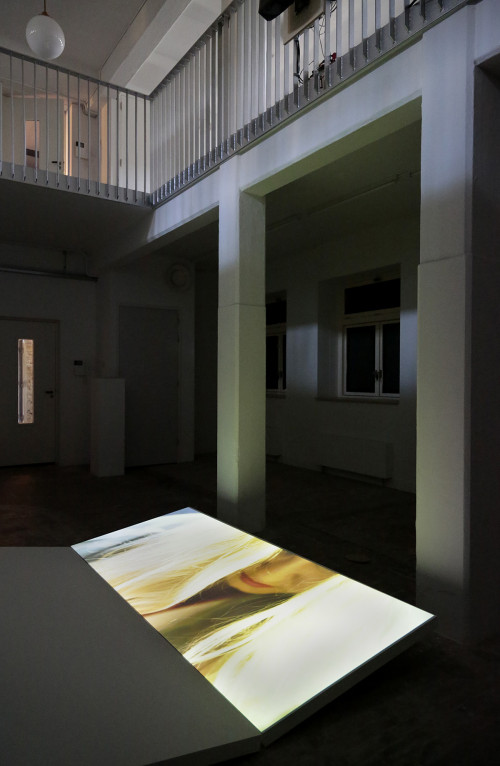
Exhibition view, Forest, A Man, A Baby & Aristocratic Life, 2015. Photo: Amanda Mullee.
Forest, A Man, A Baby & Aristocratic Life
TAOCHENG WANG
February 15 – March 1, 2015
C.o.C.A. Commission 2014
guest curatored by Hendrik Folkerts
A Tale of A Tub is proud to present Forest, A Man, A Baby & Aristocratic Life, by Taocheng Wang. The exhibition presents an installation comprising two short films and a sound work, commissioned by the foundation of the Collectors of Contemporary Art (C.o.C.A.).
Based on the famous 10th century Japanese folktale, The Tale of the Bamboo Cutter, Wang’s installation explores the relation between (narrative) representation and a kind of cinematic theatricality. The main protagonist of the story is Princess Kaguya, a figure similar to many fairy tale characters that we know and have incorporated into our collective memory. She is a mythical creature of unknown origin and unknown destination—her beauty overwhelming, her intelligence powerful, her demeanour cold. Like a collage that resembles the many colours of her kimonos, the princess goes by many names: Princess of the Moon, the Daughter of the Bamboo Cutter, the Guardian of the Great Mountain, the Child of the Emperor. A work of proto-science-fiction, the original tale explains that she was born out of a golden tree, matured rapidly into a beautiful young woman, and returned to the sky with a piercing light. Five princes sought her hand in marriage, and she responded by presenting them five impossible tasks. The princes cheated and paid for their lies with their lives. Slaughtered by a dragon, devoured by the fire-rat of China, and famished on a deserted island, their fates were sealed.
Wang’s installation unfolds along two lines of the original story: Princess Kaguya’s humble childhood as a foundling in a bamboo tree and then her rapid ascension up the social ladder leading, leading to the marriage proposals of the five devious princes. The artist changes many of the references that constitute the narrative of the original tale, interweaving them with motifs and reflections from her own life and personal experience. The fairy tale, as a narrative structure that proposes a certain moral and is charged with overly familiar cultural references, is the perfect vessel for Wang’s continuous reconfiguration of how meaning is produced according to one’s economic, sexual, social or cultural background, and identity.
The Tale of the Bamboo Cutter is already a story of profound transformation, as the mythical Princess Kaguya is able to transcend economic and cultural boundaries by the merit of her beauty, cunning, and intelligence. Wang takes this as a point of departure in order to understand how we are still fixed, or liberated, by the conditions that we begin with, yet also how we chose to identify ourselves along the way.
Support
The Collectors of Contemporary Art (C.o.C.A) foundation funds projects of young visual artists who live and work in the Netherlands. Every year, C.o.C.A. invites a curator to choose several promising artists and one or more projects are commissioned. The resulting works are exhibited during the Art Rotterdam art fair in February and become part of the C.o.C.A. collection. The foundation currently consists of six collectors of contemporary art.

Exhibition view, Forest, A Man, A Baby & Aristocratic Life, 2015. Photo: Amanda Mullee.

Exhibition view, Forest, A Man, A Baby & Aristocratic Life, 2015. Photo: Amanda Mullee.

Exhibition view, Forest, A Man, A Baby & Aristocratic Life, 2015. Photo: Amanda Mullee.

Exhibition view, Forest, A Man, A Baby & Aristocratic Life, 2015. Photo: Amanda Mullee.

Exhibition view, Forest, A Man, A Baby & Aristocratic Life, 2015. Photo: Amanda Mullee.

Exhibition view, Forest, A Man, A Baby & Aristocratic Life, 2015. Photo: Amanda Mullee.

Exhibition view, Forest, A Man, A Baby & Aristocratic Life, 2015. Photo: Amanda Mullee.

Exhibition view, Forest, A Man, A Baby & Aristocratic Life, 2015. Photo: Amanda Mullee.

Exhibition view, Forest, A Man, A Baby & Aristocratic Life, 2015. Photo: Amanda Mullee.

Exhibition view, Forest, A Man, A Baby & Aristocratic Life, 2015. Photo: Amanda Mullee.

Exhibition view, Forest, A Man, A Baby & Aristocratic Life, 2015. Photo: Amanda Mullee.